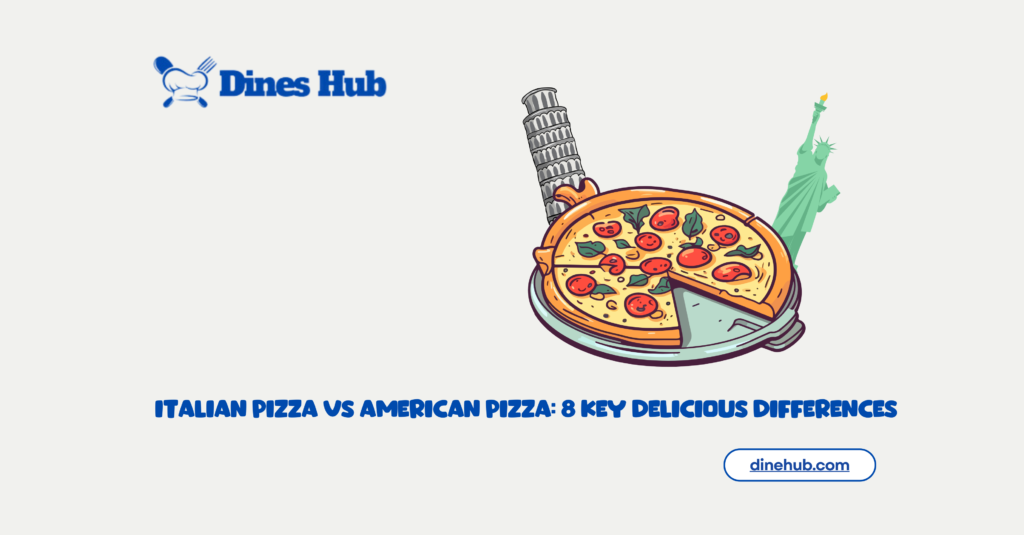Italian Pizza vs American Pizza: 8 Key Delicious Differences!” highlights distinct contrasts in crust, sauce, toppings, cheese, and preparation, showcasing their unique appeal for pizza lovers worldwide.
Introduction
The debate of Italian Pizza vs American Pizza has long intrigued food enthusiasts around the world. Pizza, a universally loved dish, has evolved significantly from its origins in Italy to the bustling pizzerias of America. While both versions are delicious in their own right, they cater to different tastes and preferences. This article delves into the key differences between Italian Pizza vs American Pizza, examining their history, preparation methods, ingredients, and cultural significance. Whether you’re a fan of the thin, crispy crust of Italian Pizza vs American Pizza or the thick, hearty slices of American pizza, understanding these distinctions will deepen your appreciation for this beloved dish.
A Brief History of Pizza: Italian Origins and American Adaptations
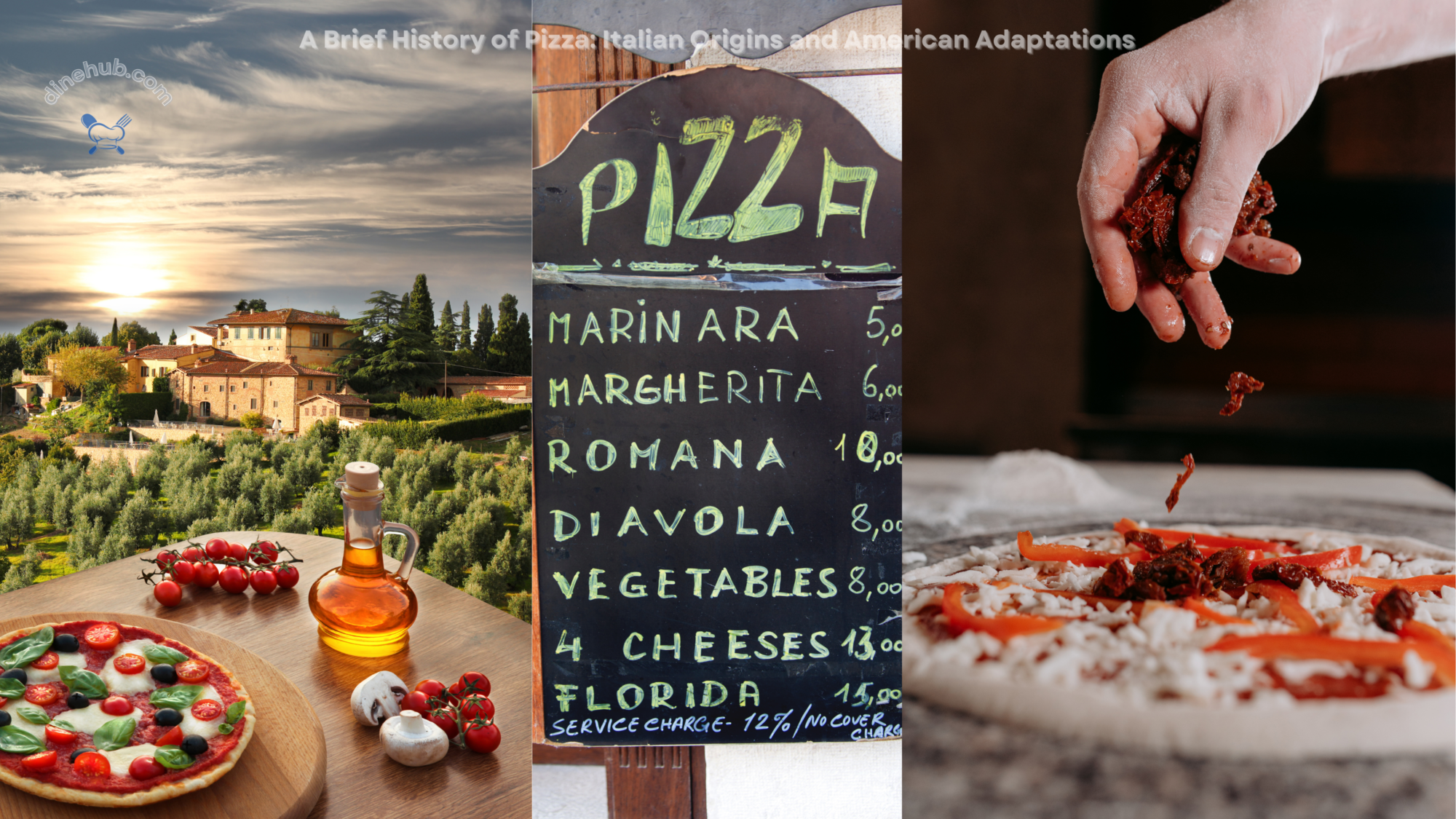
The Birth of Pizza in Italy
The Italian Pizza vs American Pizza debate starts with their origins. Italian Pizza traces its roots back to Naples, Italy, where it was originally a humble street food for the working class. The classic Neapolitan pizza, known for its thin, soft crust, simple toppings, and quick baking time, became an integral part of Italian cuisine. Traditional Italian pizzas like Margherita and Marinara, made with high-quality, fresh ingredients, emphasize the flavors of the dough, tomatoes, and mozzarella.
The American Evolution
When Italian immigrants brought pizza to the United States in the late 19th century, the dish underwent significant transformations, leading to the rise of American Pizza. American pizza adapted to local tastes and ingredients, giving birth to regional styles such as New York-style, Chicago deep-dish, and California-style pizza. These adaptations reflect the diverse culinary landscape of America and contribute to the ongoing debate of Italian Pizza vs American Pizza.
The Crust: Thin and Crispy vs Thick and Chewy
Italian Pizza Crust

The crust is one of the most noticeable differences between Italian Pizza vs American Pizza. Traditional Italian pizza, especially the Neapolitan style, features a thin, soft, and slightly chewy crust. This crust is made from simple ingredients—flour, water, salt, and yeast—and is allowed to rise slowly, resulting in a light and airy texture. The dough is hand-stretched and cooked at high temperatures in a wood-fired oven, giving it a unique char and flavor.
American Pizza Crust
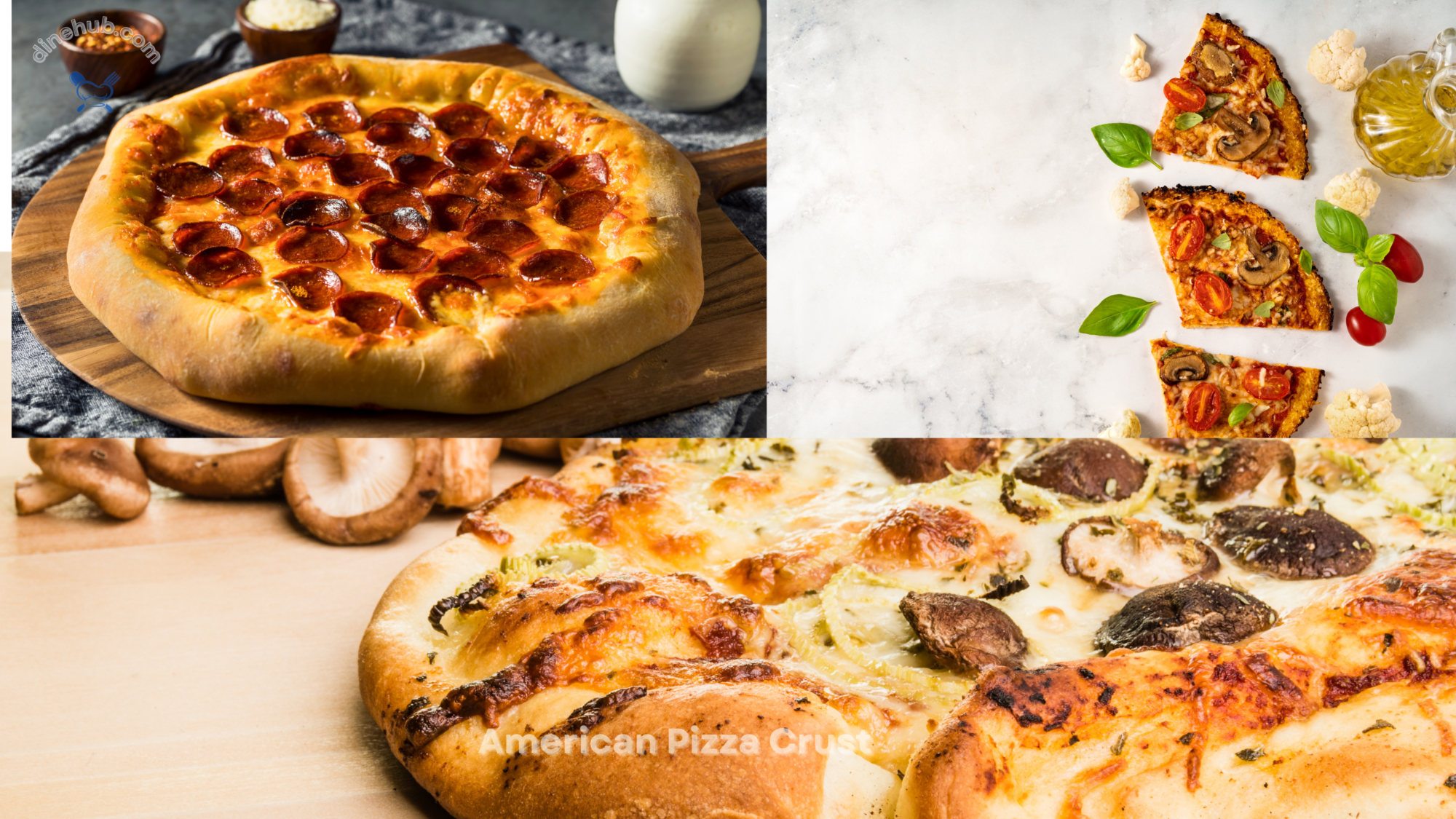
In contrast, American pizza comes in various crust styles, ranging from the thin, foldable slices of New York-style pizza to the thick, buttery crust of Chicago deep-dish pizza. New York-style pizza crust is typically hand-tossed and cooked in a gas or electric oven, resulting in a crispy yet pliable slice that can be easily folded. On the other hand, Chicago deep-dish pizza features a thick, pie-like crust with high edges, baked in a deep pan to hold a generous number of toppings and cheese.
Toppings and Ingredients: Simplicity vs Abundance
Italian Pizza Toppings
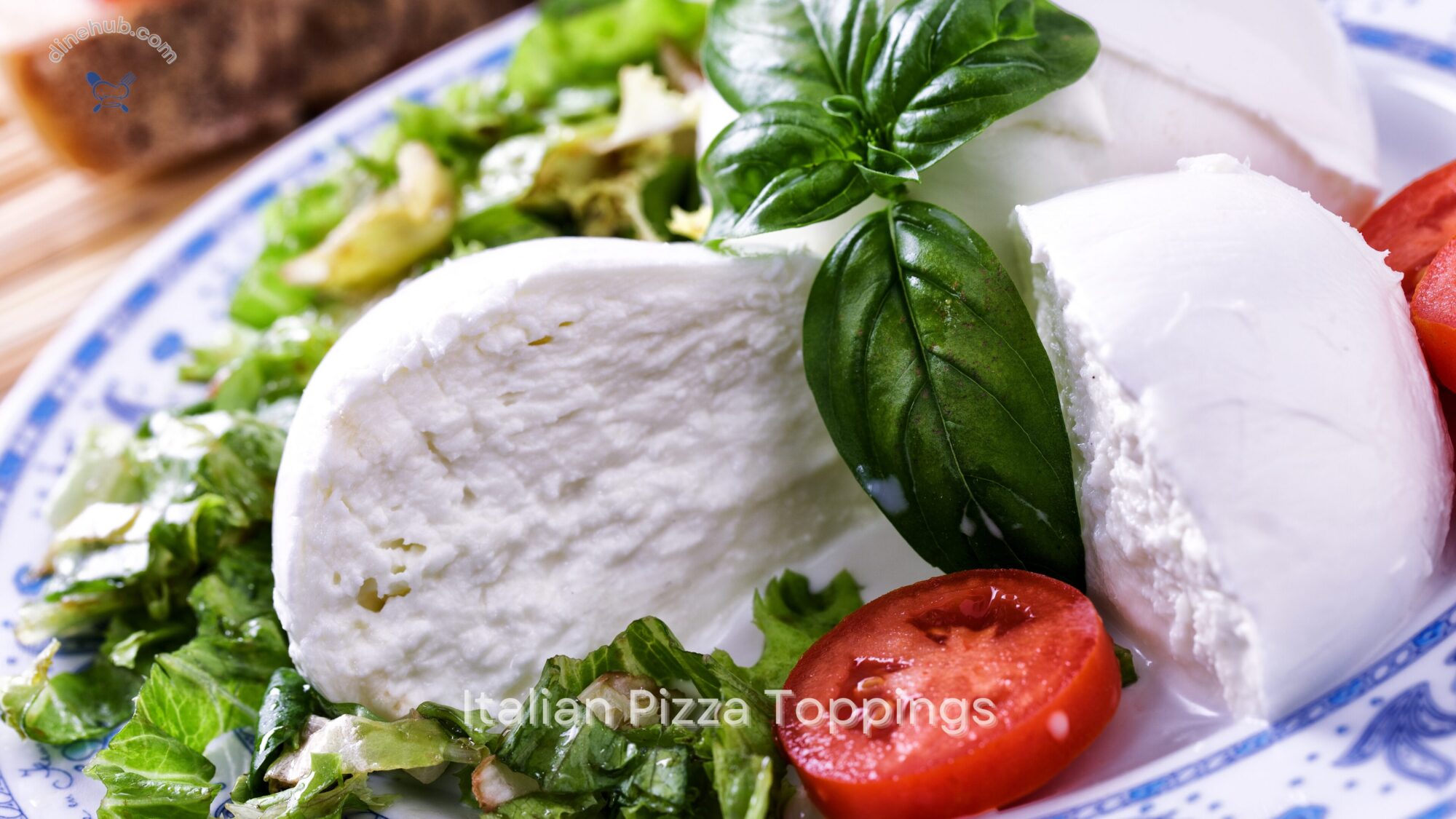
Italian Pizza is known for its simplicity and emphasis on high-quality ingredients. Traditional Italian pizzas often feature minimal toppings, allowing the flavors of the dough, tomato sauce, and mozzarella to shine. Common toppings include fresh basil, prosciutto, arugula, and buffalo mozzarella. The focus is on balance and harmony, with each ingredient complementing the others without overwhelming the palate.
American Pizza Toppings

American Pizza, on the other hand, is characterized by its abundance of toppings and diverse flavor combinations. From pepperoni and sausage to vegetables and exotic options like pineapple and barbecue chicken, American pizzas offer something for everyone. The generous use of cheese, often a blend of mozzarella and other varieties, adds to the richness and indulgence of each slice. This abundance reflects America’s love for bold and varied flavors.
Cooking Methods: Wood-Fired vs Oven-Baked
Italian Pizza Cooking Methods
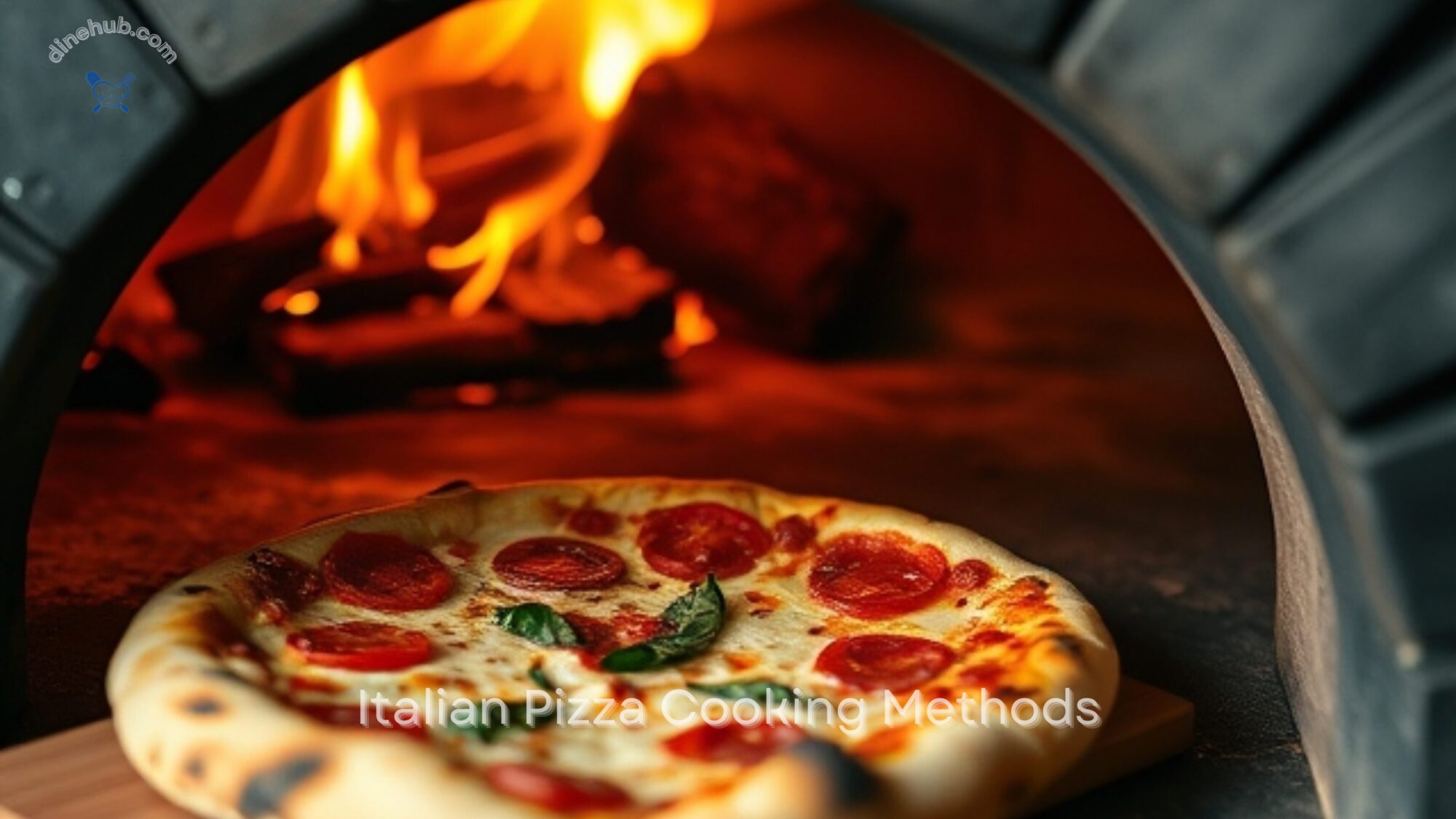
Traditional Italian Pizza is typically cooked in a wood-fired oven at extremely high temperatures, often exceeding 800 degrees Fahrenheit. This intense heat cooks the pizza in just 90 seconds to 2 minutes, creating a crispy exterior and a soft, chewy interior. The wood-fired oven imparts a distinct smoky flavor and slight char to the crust, enhancing the overall taste.
American Pizza Cooking Methods
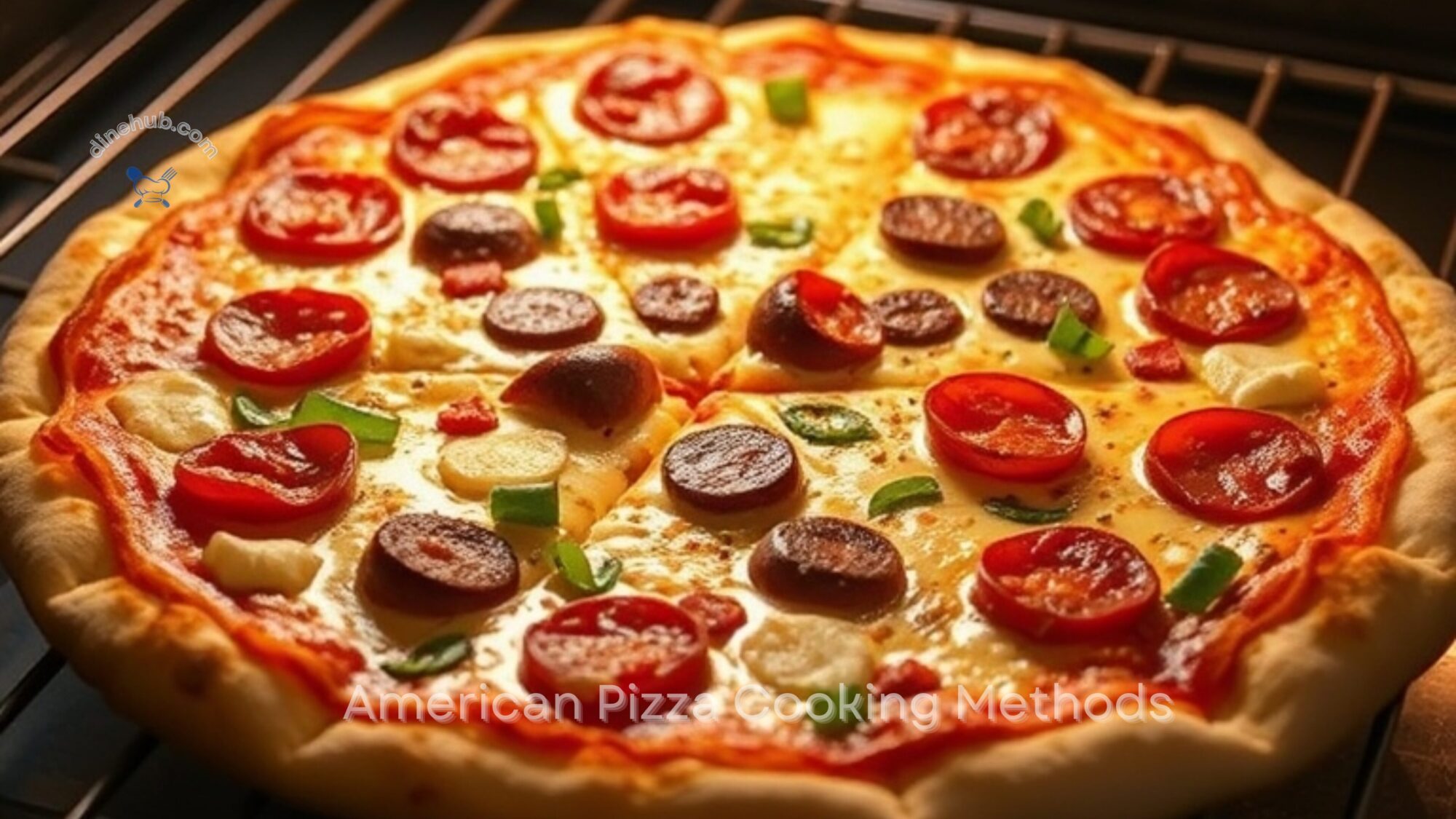
American Pizza is usually baked in gas or electric ovens at lower temperatures compared to their Italian counterparts. The cooking times are longer, especially for styles like Chicago deep-dish, which can take up to 45 minutes to bake. Some American pizzerias use pizza stones or bricks to mimic the effect of a wood-fired oven, but the results are typically less smoky and charred.
Cultural Significance and Dining Experience
The Italian Pizza Experience
In Italy, pizza is more than just food; it’s a cultural experience. Traditional pizzerias, often family-owned, focus on quality and authenticity. The dining experience is casual and communal, with pizzas shared among friends and family. Italians take pride in their pizza-making heritage, and this is reflected in the meticulous preparation and presentation of each pie.
The American Pizza Experience
In the United States, pizza has become an integral part of the fast-food culture. It’s a go-to option for parties, game nights, and quick meals. The American pizza experience varies widely, from sit-down restaurants and pizzerias to delivery and takeaway options. This flexibility has made pizza a versatile and beloved dish across the country.
Health Considerations: Caloric Content and Nutritional Value
Italian Pizza Health Considerations
Italian Pizza tends to be lighter and lower in calories compared to its American counterpart, thanks to its thin crust and moderate use of cheese and toppings. The emphasis on fresh, high-quality ingredients also contributes to its nutritional value. Traditional Italian pizzas are often simpler, with fewer processed ingredients, making them a healthier option for pizza lovers.
American Pizza Health Considerations
American Pizza is generally more indulgent and higher in calories due to its thicker crust, generous cheese, and abundant toppings. While delicious, it can be more challenging to enjoy regularly without exceedingly daily caloric and fat intake. However, many pizzerias now offer healthier options, such as whole grain crusts, low-fat cheese, and a variety of vegetable toppings, allowing health-conscious consumers to enjoy their favorite food in moderation.
Table: Key Differences Between Italian Pizza vs American Pizza
| Aspect | Italian Pizza | American Pizza |
|---|---|---|
| Crust | Thin, soft, slightly chewy | Varied: thin and crispy (New York), thick and buttery (Chicago) |
| Toppings | Simple, high-quality ingredients | Abundant, diverse, bold flavors |
| Cooking Method | Wood-fired oven, high temperature, quick cook | Gas/electric oven, lower temperature, longer cook |
| Cultural Significance | Heritage, communal dining | Fast food culture, versatile dining |
| Health Considerations | Lower in calories, fresh ingredients | Higher in calories, indulgent |
Problem: Finding Authentic Italian Pizza
One common challenge for pizza lovers is finding authentic Italian Pizza outside of Italy.
Solution: Look for pizzerias certified by the Associazione Verace Pizza Napoletana (AVPN), which ensures adherence to traditional Neapolitan pizza-making standards.
Problem: Balancing Health and Indulgence
With American Pizza, the challenge often lies in balancing the desire for indulgence with health considerations. The rich, heavy nature of American pizzas can make it difficult to enjoy regularly without compromising on health.
Solution: opt for healthier versions, such as those with whole grain crusts and plenty of vegetable toppings. Many pizzerias offer customizable options, allowing you to choose lighter ingredients and control portion sizes.
FAQs About Italian Pizza vs American Pizza
- What are the main differences between Italian pizza vs American pizza? The main differences lie in the crust, toppings, cooking methods, and cultural significance. Italian pizza features a thin, soft crust with simple, high-quality toppings, while American pizza offers a variety of crust styles with abundant and diverse toppings.
- Which is healthier, Italian pizza vs American pizza?Italian pizza is generally healthier due to its thinner crust, moderate use of cheese, and emphasis on fresh ingredients. American pizza tends to be higher in calories and more indulgent.
- Can I find authentic Italian pizza in the United States?Yes, authentic Italian pizza can be found in the United States, especially at pizzerias certified by the Associazione Verace Pizza Napoletana (AVPN) or those that follow traditional Neapolitan pizza-making methods.
- What is the best cooking method for homemade pizza?For a more authentic Italian pizza experience, use a pizza stone in your oven to mimic the high temperatures of a wood-fired oven. For American-style pizza, a regular oven or a deep-dish pan works well.
- What toppings are commonly found on Italian pizza? Common toppings on Italian pizza include fresh tomatoes, mozzarella cheese, basil, prosciutto, arugula, and buffalo mozzarella. The focus is on simplicity and high-quality ingredients.
- What are some popular American pizza styles?
Popular American Pizza styles include New York-style (thin and crispy), Chicago deep-dish (thick and buttery), and California-style (innovative toppings). - How do I make my homemade pizza healthier?
To make homemade pizza healthier, use whole grain crust, low-fat cheese, and plenty of vegetables. - Why is wood-fired pizza considered better?
Wood-fired pizza is considered better by many because the high heat of the wood-fired oven cooks the pizza quickly, giving it a distinct smoky flavor and perfect char.
Conclusion
Italian Pizza vs American Pizza: 8 Key Differences! showcases the beauty of diversity in pizza-making. Whether you prefer the elegant simplicity of Italian Pizza or the indulgent creativity of American Pizza, both offer unforgettable experiences that celebrate the love for this universal dish. Follow our blog Dines Hub for more insights into the world of pizza!

